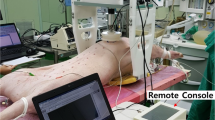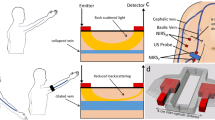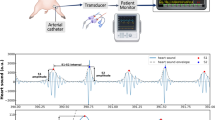Abstract
IN a previous communication we described the determination of the cardiac output in cattle by an injection method using T.1824 as the intravascular indicator1. The same method was used to determine the cardiac output in horses. The technique used for obtaining arterial blood samples from the brachial artery of horses was that described by Fisher2, and for convenience the serial arterial blood samples were collected at 2-sec. intervals. Duplicate determinations of the cardiac output were carried out on 10 adult horses which, so far as could be ascertained, had normal cardio-vascular systems. The 10 horses on which the determinations were made were not at the time working or getting regular exercise. They were allowed to settle in their surroundings for some time prior to making a determination, and during the manipulative procedures excitement of the subjects was avoided as far as possible. Pulse-rates were taken during the injection of the dye and collection of arterial blood samples, and during this procedure the pulse-rates remained unaltered and all were within the range of 35–55 beats per minute. Table 1 shows the results of duplicate determinations on 10 horses. The mean value obtained for the cardiac output of 74 ± 9 ml./min./kgm. body-weight is similar to that determined by Zuntz and Hagermann3 of 75 ml./min./kgm. bodyweight for resting horses. These values for the horse are much lower than the value previously obtained in cattle of 113 ± 11 ml./min./kgm. body-weight1 and that of sheep found by Schambye4 and the goat found by Barcroft et al. 5 (1919).
This is a preview of subscription content, access via your institution
Access options
Subscribe to this journal
Receive 51 print issues and online access
$199.00 per year
only $3.90 per issue
Buy this article
- Purchase on Springer Link
- Instant access to full article PDF
Prices may be subject to local taxes which are calculated during checkout
Similar content being viewed by others
References
Fisher, E. W., and Dalton, R. G., Nature, 183, 829 (1959).
Fisher, E. W., Vet. Rec., 71, 514 (1959).
Zuntz, N. O., and Hagermann, O., “Stoffwechsel des Pferdes”, (Verlagsbuchhandlung, Paul Parey, Berlin, 1898).
Schambye, P., Nord. Vet. Med., 4, 1148 (1952).
Barcroft, J., Boycott, A. E., Dunn, J. S., and Peters, R. A., Quart. J. Med., 13, 35 (1919).
Author information
Authors and Affiliations
Rights and permissions
About this article
Cite this article
FISHER, E., DALTON, R. Cardiac Output in Horses. Nature 184, 2020–2021 (1959). https://doi.org/10.1038/1842020b0
Issue Date:
DOI: https://doi.org/10.1038/1842020b0
Comments
By submitting a comment you agree to abide by our Terms and Community Guidelines. If you find something abusive or that does not comply with our terms or guidelines please flag it as inappropriate.



